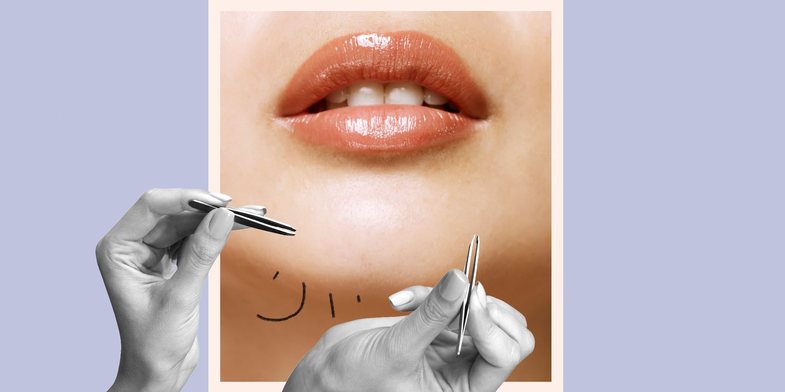
Having beard hair is perfectly normal and is usually not a cause for concern. Hormone changes, aging, and even genetics can be some of the factors that make eyebrow hair stand out. However not always the presence of thicker hairs on the chin occurs for no reason.
What causes beard hairs?
Everyone has beard hair and this is quite normal. We all have vellus follicles that produce very thin hairs in light color and serve a purpose, which is to help regulate body temperature.
During puberty, increased production of the androgen hormone causes these follicles to become larger and the hairs to be thicker, longer and darker. Everyone’s body produces androgens, but men have higher levels, which is why men usually have more hair than women.
Lifelong hormone levels due to aging, weight gain and other factors, including pregnancy and menopause. Even a slight increase in androgen or imbalance between male and female sex hormones - which everyone has - can result in more hair in unusual places, such as the beard.
There are a number of factors that affect when it comes to facial hair. Some facial hairs are normal and harmless, while some can be a sign of a health problem.
Excess hair on the chin or face, or their sudden growth on any part of the face, can be a sign of a condition called hypertrichosis. The type of hypertrichosis for women is called hirsutism and can cause dark and thick hairs to grow on the chin, upper lip, chest, abdomen and back.
Although the exact cause of hirsutism is not always known, it can be caused by some medical condition.
Polycystic Ovary Syndrome (PCOS): Characterized by a group of symptoms affecting the ovaries, including:
- small ovarian cysts
- high levels of androgens and other male hormones
- irregular or delayed periods
Sindroma Cushing: Rezulton nga ekspozimi i trupit ndaj niveleve të larta të hormonit kortizol për një periudhë të zgjatur. Mund të ndodhë nëse merrni kortikosteroide për një kohë të gjatë ose nëse trupi prodhon shumë kortizol.
Hiperplazia jo-klasike kongjenitale e veshkave: Një formë më e butë e një gjendjeje gjenetike të njohur si hiperplazi kongjenitale e veshkave (CAH) që ndodh më vonë në jetë. Gjendja është shumë e rrallë dhe jo gjithmonë shkakton simptoma. Gratë që kanë simptoma përjetojnë ato që lidhen me androgjenin e tepërt, të tilla si: qimet e tepërta në fytyrë, mungesë flokësh në pjesën e përparme, perioda të çrregullta, infertilitet.
Tumor që sekreton androgjen: Ndodh shumë rrallë. Qimet e tepërta të shkaktuara nga këto lloje të tumoreve zakonisht rriten papritur dhe vazhdojnë të rriten edhe me trajtim mjekësor.
Kur të shkoni te mjeku
Sipas Akademisë Amerikane të Dermatologjisë, duhet të shkoni te mjeku nëse përjetoni një rritje të shtuar të qimeve të fytyrës ose trupit gjatë një periudhe të shkurtër kohore. Rritja e qimeve që shoqërohet me simptoma të tjera, të tilla si akne, ndryshimi i zërit ose perioda të çrregullta gjithashtu duhet të vlerësohen nga një mjek. Një dermatolog mund të shohë rritjen e qimeve dhe të të përcaktojë kontrollet e mëtejshme bazuar te simptomat e tjera.
Unwanted hair removal (several options):
- tweezers
- shaving
- professional hair removal
- laser
- electrolysis
Burimet: Cleveland Clinic, American Academy of Dermatology, Healthline





